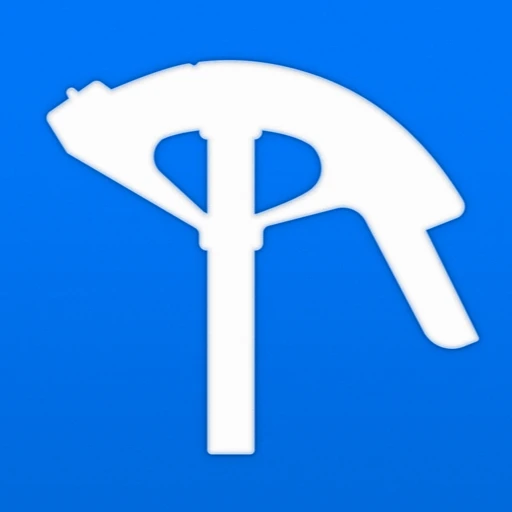 |
|
| Rating: 4.5 | Downloads: 50,000+ |
| Category: Productivity | Offer by: Bret H. Hardman |
QuickBend: Conduit Bending is a mobile application designed to assist electricians and plumbers in planning and executing conduit bends accurately and efficiently. The app provides a digital solution for calculating bend angles and lengths, replacing traditional paper templates and calculations. Perfect for professionals who work on-site and require precise measurements for various conduit sizes and types.
Its core value lies in speeding up the setup process and minimizing errors on the job site. QuickBend: Conduit Bending empowers users with quick lookups for standard and custom bends, enhancing productivity and accuracy during installations, from rough-in phases to final wiring. The intuitive interface simplifies complex electrical or plumbing tasks.
App Features
- Template Selection: The app allows users to choose from a wide range of standard conduit bends directly from their phone. This eliminates the need to carry heavy physical template boxes, saving time on-site and ensuring the right bend is selected quickly for the specific pipe diameter.
- Angle & Length Calculator: QuickBend incorporates an advanced calculator that instantly determines the correct bend angle and material needed based on user input for pipe size, bending radius, and desired angle. This feature enhances precision and usability by preventing costly mistakes due to incorrect calculations.
- Step-by-Step Guide: For complex bends like offset or saddle bends, the app guides the user with clear instructions displayed sequentially alongside visual aids. This makes it easier for technicians of varying skill levels to perform difficult bends accurately, especially when working alone or in less controlled environments.
- Custom Bend Library: Users can create and save custom bends specific to their projects or frequent tasks, which can be easily accessed later. This saves significant time on recurring bends, allows for project consistency, and improves the overall speed of completing installations with personalized or complex requirements.
- Compatibility with Multiple Conduit Sizes and Types: QuickBend: Conduit Bending supports a broad range of standard conduit sizes and types (e.g., EMT, PVC, rigid, flexible) and can be easily configured for regional standards or specific project needs. This flexibility ensures the app works for diverse professionals from different regions or industries.
- Measurement Unit Support: The app offers support for both Imperial (inches) and Metric (millimeters) measurements, catering to a global user base and accommodating different regional practices or project requirements seamlessly. This supports international use.
Pros & Cons
Pros:
- Time-Saving Calculations and Template Lookup
- Highly Accurate Bends Minimizing Material Waste
- Improved On-Site Efficiency and Workflow
- Portable and Accessible Tool Anywhere on Site
Cons:
- Limited Advanced Functionality Compared to Desktop Software
- Requires a Stable Internet Connection for Updates (Optional Feature)
- Initial Learning Curve for Users Familiar Only with Traditional Methods
- Display Size May Be Less Ideal for Extremely Complex Multi-Step Bends
Similar Apps
| App Name | Highlights |
|---|---|
| PipeBend Pro |
This app offers fast processing, intuitive design, and wide compatibility. Known for custom workflows and multi-language support. |
| ElectroBend Helper |
Designed for simplicity and mobile-first usability. Includes guided steps and real-time previews. |
| ConduitMaster X |
Offers AI-powered automation, advanced export options, and collaboration tools ideal for teams. |
Frequently Asked Questions
Q: Is QuickBend: Conduit Bending compatible with both iOS and Android devices?
A: Yes, QuickBend: Conduit Bending is available for download on both iOS (App Store) and Android (Google Play Store) platforms, providing accessibility for a wide range of users.
Q: Do I need an internet connection to use QuickBend: Conduit Bending for calculating bends?
A: While an internet connection is not mandatory for the core calculation functions, it may be required occasionally for app updates or accessing the cloud-based custom bend library, if that feature is offered.
Q: Can QuickBend: Conduit Bending help me learn the correct techniques for different types of conduit bends?
A: While the app focuses primarily on calculation and template reference, its step-by-step guide feature provides context on how and when to perform specific bends. However, it is always recommended to consult official electrical codes or experienced professionals for definitive technique guidance.
Q: What is the difference between a standard bend and an offset bend, and how does QuickBend help with both?
A: A standard bend is a simple 90° or 45° turn. An offset bend corrects pipe alignment issues in tight spaces. QuickBend calculates precise angles and lengths for both types, ensuring accurate templates whether you’re making a simple corner or fitting a pipe around an obstruction.
Q: Does QuickBend: Conduit Bending include a feature to calculate conduit bends based on specific building codes or regional standards?
A: The app typically includes standard industry calculations. For code-specific requirements, users might need to manually input adjustments or consult the app’s documentation. It’s advisable to check the app details for its specific calculation methodology and intended standards alignment.
Screenshots
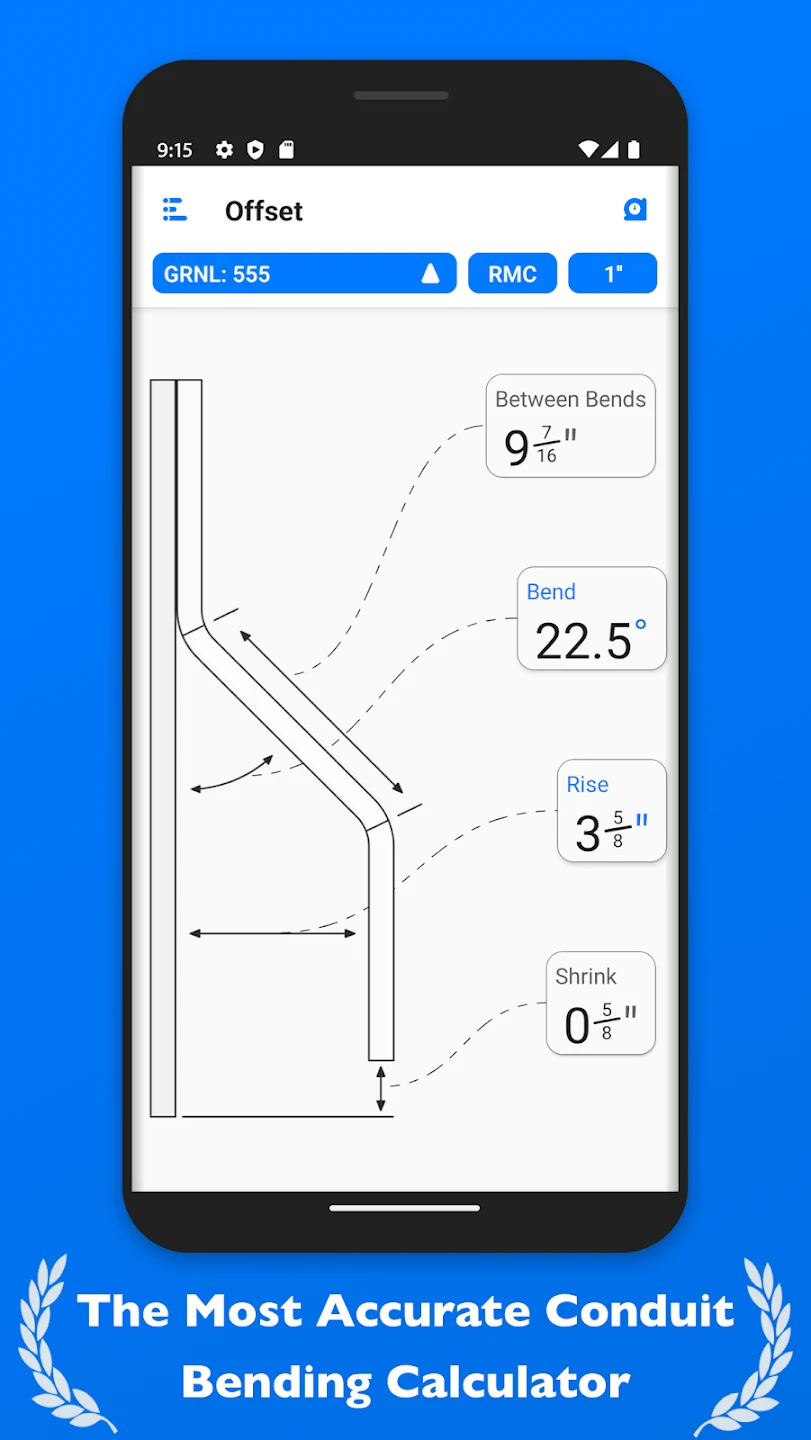 |
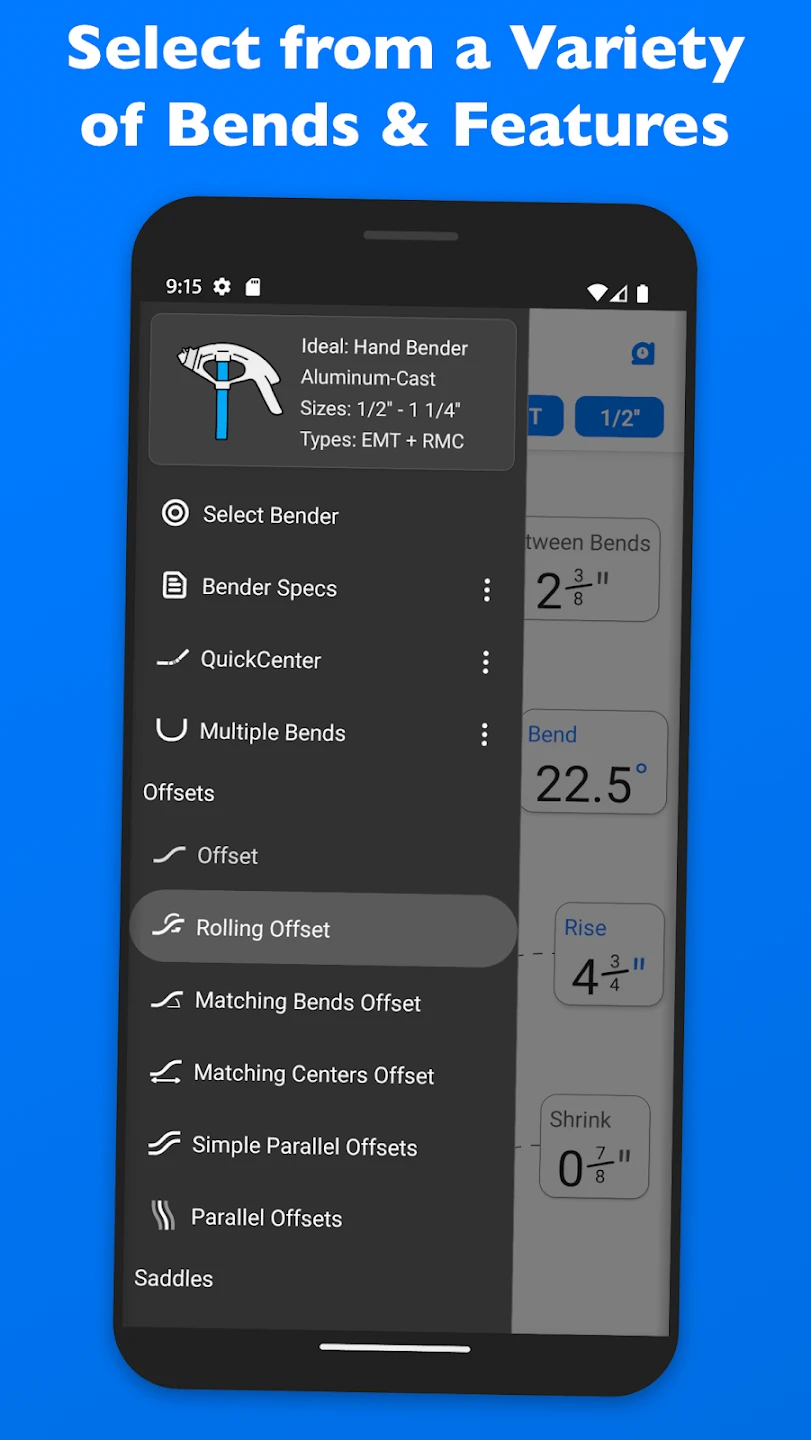 |
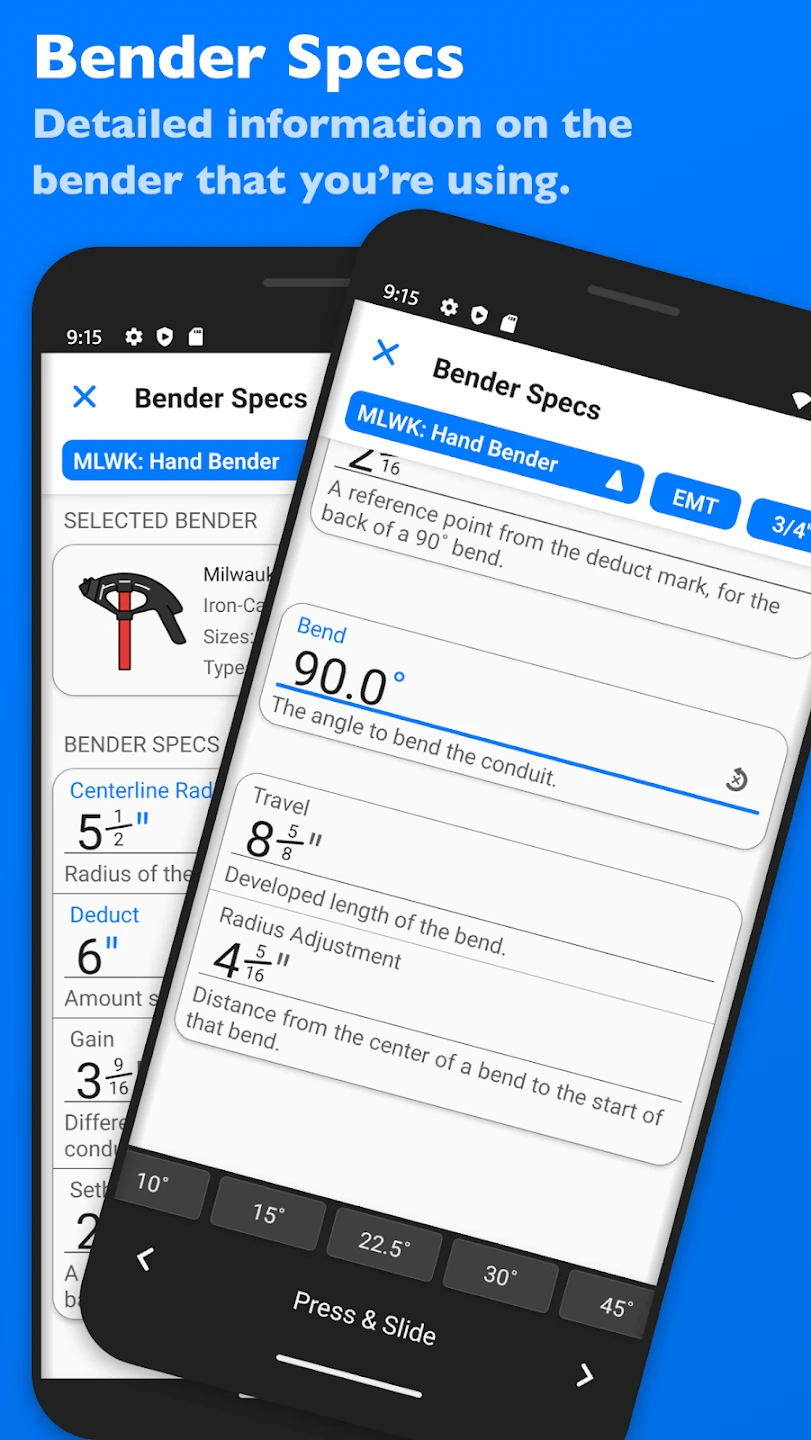 |
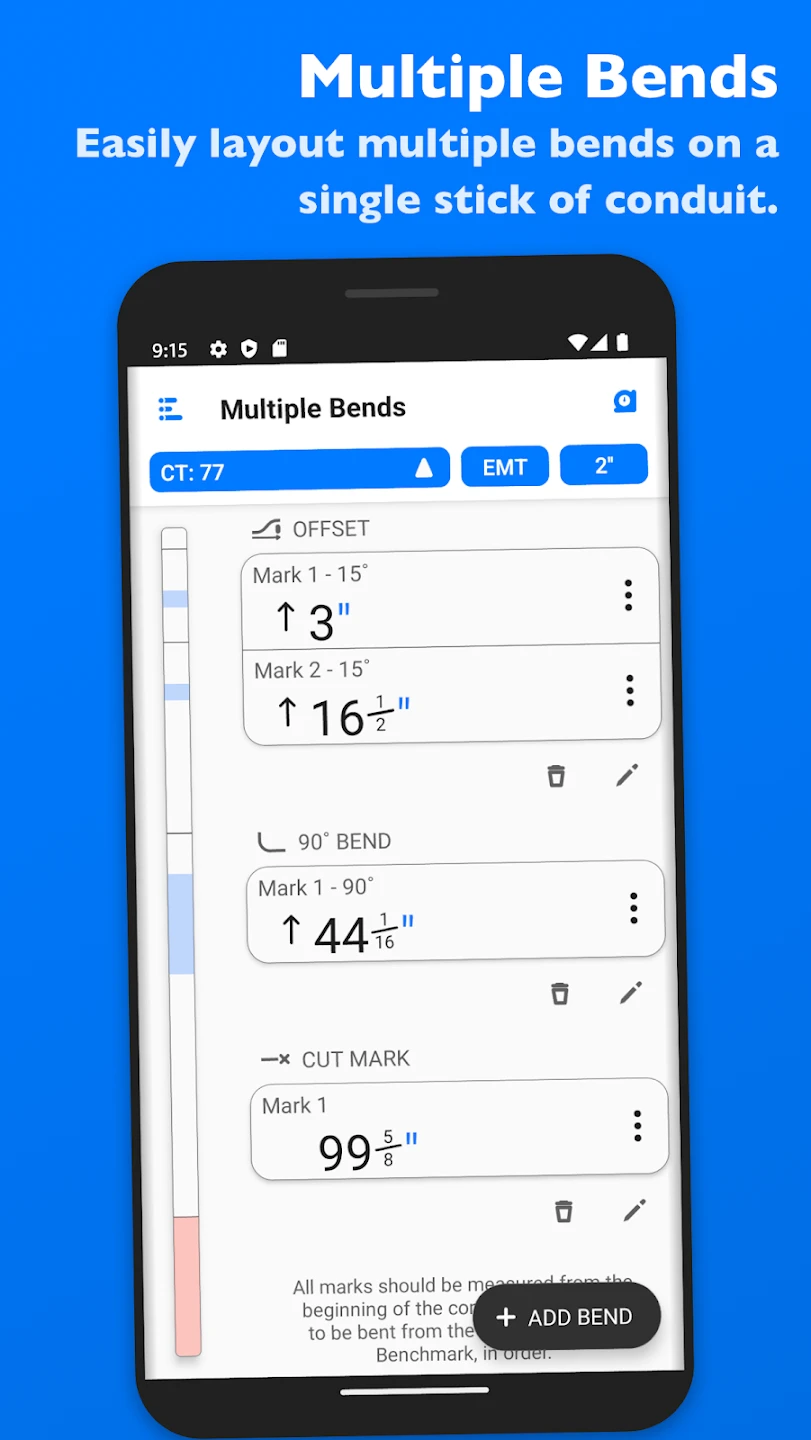 |






